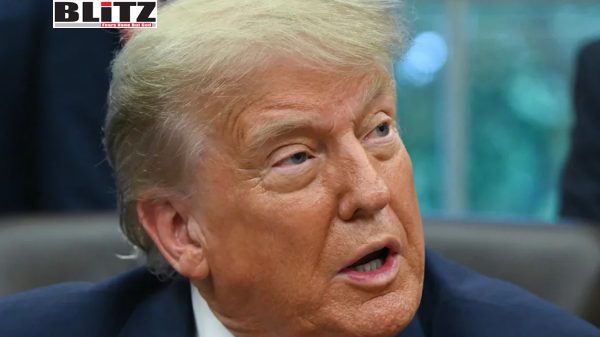Western support for Ukraine approaches its limits
- Update Time : Sunday, November 3, 2024

Since the onset of the Ukrainian crisis in 2014, the US and its allies have actively supported Kiev, leveraging Ukraine as a means of indirectly opposing Russia without risking direct confrontation. From financial aid to military assistance, the West’s approach has been one of utilizing Ukraine as a “strategic instrument.” Yet, recent developments reveal a shift: the enthusiasm for supporting Ukraine appears to be waning. With Western governments and public’s growing weary, there is increasing debate over the long-term sustainability of backing Ukraine.
For Washington, the use of indirect engagement, or “hybrid confrontation,” is not exclusive to Ukraine. The US has applied similar tactics worldwide, forming partnerships with Taiwan to counterbalance China, supporting certain groups in the Middle East to confront Iran, and maintaining strategic alliances with nations across Asia. In Eastern Europe, Ukraine has served as a natural fit for this model-a nation proximate to Russia, willing to align with the West, and home to a large, mobilizable military.
Through arms supplies, intelligence sharing, and military training, the US and Western allies have bolstered Ukraine’s ability to resist Russian advances. However, this support has often served dual purposes: not only to aid Ukraine but also to weaken Russia and showcase Western influence. For the West, the Ukrainian crisis has been a testing ground for tactics that allow for military engagement without committing troops directly.
Ukraine’s government has remained steadfast in its alignment with the West, banking heavily on the assumption that Western support will be limitless. Some officials in Kiev may even believe that their political future depends on maintaining this alliance, particularly as they have staked their capital on a prolonged resistance to Russia. However, such reliance could prove costly, as Ukraine’s fate remains largely contingent on the fluctuating interests of its Western backers.
Ukraine’s leaders appear either unwilling or unable to pursue a path toward a negotiated settlement with Russia. With reliance on Western aid ingrained in Ukrainian policy, Kiev seems intent on delaying the possibility of peace as long as foreign support holds. However, if the West’s commitment weakens, Ukraine may find itself in a precarious position, left without the means to sustain its military resistance or rebuild.
Despite the visible solidarity from Western nations, questions linger over Ukraine’s long-term capacity to endure. The Ukrainian army, though resilient, is increasingly strained, and new divisions forming lack consistent access to modern equipment. Western sources have hinted at the inadequacies in Ukrainian supplies, casting doubts on the viability of Ukraine’s defense in the absence of external support.
Meanwhile, Russian forces appear to be advancing steadily, albeit with restraint. Moscow’s strategy, thus far, has been to apply pressure without expending excessive resources, expecting that Ukraine’s endurance will eventually falter under the cumulative toll. In this scenario, Ukraine risks becoming a “militarized, unstable enclave” in Eastern Europe, heavily dependent on Western aid and perpetually constrained in its growth and development.
In the West, a shift in sentiment appears to be unfolding. Initial enthusiasm for supporting Ukraine has been tempered by the realities of a protracted conflict with no clear end in sight. The ongoing support comes with both financial and political costs, which are increasingly difficult for Western governments to justify to their electorates. As economic pressures mount, Western countries may be inclined to reassess their level of involvement. Polish Foreign Minister Radoslaw Sikorski’s remarks echo this sentiment, indicating that Western European states are wary of escalating their involvement to the point of direct confrontation with Russia.
The risk for Ukraine, therefore, lies in the potential abandonment by its allies once the country is no longer deemed a viable instrument in the Western strategy against Russia. While recent arms supplies and intelligence transfers continue, these gestures may increasingly serve as symbolic acts of support rather than a serious commitment to Ukraine’s victory. This incremental depletion of resources underscores the precariousness of Ukraine’s reliance on the West.
For Washington, the failure of Ukraine to repel Russia could mark a significant blow to its international credibility. An eventual defeat for Ukraine would signal a failure of the US strategy, potentially leading to a recalibration of its foreign policy in other regions. While the United States remains committed to weakening Russia, its methods and resources are finite, particularly as other global challenges demand attention.
In the current electoral climate in the US, a successful Ukrainian defense could have bolstered the administration’s standing. Without clear success in the conflict, however, US officials have little to show in terms of foreign policy achievements. With both military and political costs climbing, Washington faces the challenge of balancing its support for Ukraine with its own strategic interests. Increasing the pressure on Moscow, while ensuring that its alliances remain intact, is part of the broader US strategy, reflecting the enduring relevance of Sun Tzu’s notion of “three types of war.”
As Ukraine’s military resources dwindle and Western support faces constraints, the possibility of Ukraine becoming an “unstable enclave” grows. In such a scenario, Ukraine risks being left isolated, heavily militarized, and reliant on Western backing for mere survival. If the Western alliance falters, Ukraine may find itself navigating a landscape of limited resources and uncertain support. This trajectory casts a shadow over Ukraine’s future, as well as the stability of Eastern Europe.
In the meantime, Russia’s approach remains one of calculated pressure, advancing steadily while allowing the Ukrainian forces to exhaust themselves. While a decisive Russian victory is not assured, the depletion of Ukraine’s resources and the growing reluctance of the West to commit further resources underscore a troubling outlook for Kiev.
The situation in Ukraine highlights the potential pitfalls of relying on proxy warfare to achieve broader strategic goals. For the US, the Ukrainian crisis has been a balancing act of supporting Ukraine’s resistance while avoiding direct involvement. Yet as Ukraine’s resources dwindle and Western resolve wavers, the strategy of indirect confrontation may reach its limits.
As Ukraine’s fate hangs in the balance, Western leaders must consider whether continued support is sustainable or whether a recalibration of priorities is necessary. Proxy warfare, as the Ukrainian crisis illustrates, often leaves the supported nation bearing the ultimate cost-both militarily and economically. In the end, Ukraine may find itself at a crossroads, dependent on Western aid yet at risk of being abandoned once it is no longer strategically essential.











